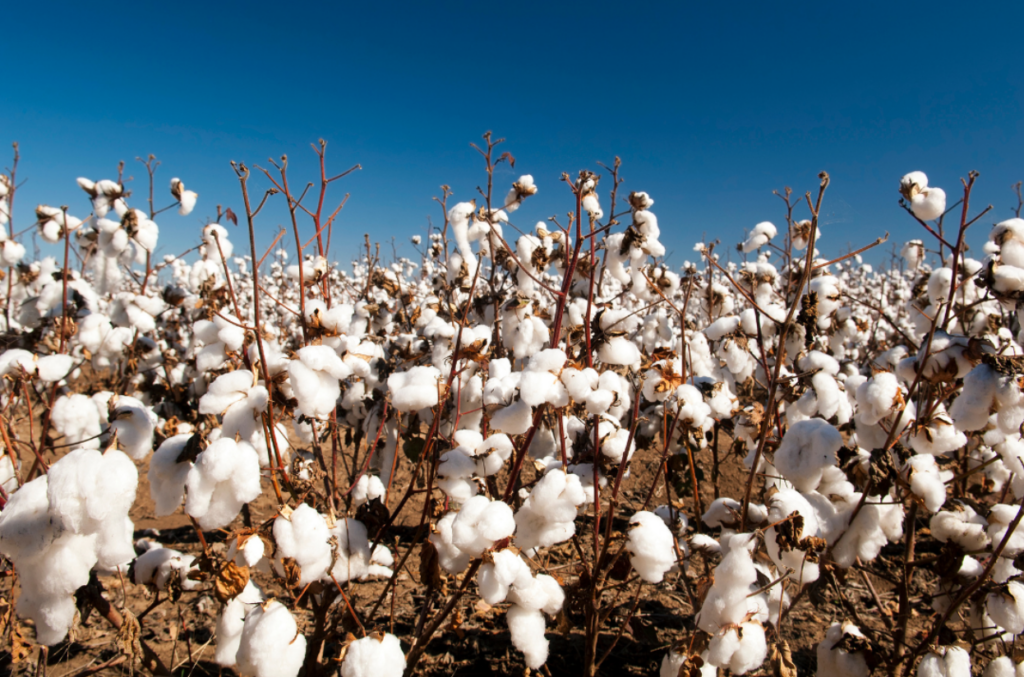Fast Fashion and Climate Change 101
Victoria Whalen, ACE Fellow
|June 17, 2022

As the price of apparel gets cheaper, their quality decreases leading to ethical and sustainable issues. Fast fashion is the latest business model that is exacerbating climate change consequences. As the third-largest polluting industry in the world, the fashion supply chain must change before it’s too late.
What is Fast Fashion?
The fashion industry has been a staple in modern society for centuries. However, throughout the decades the industry model has changed significantly to keep pace with growing consumerism. As of 2019, 62 million metric tons of apparel were consumed worldwide.
Fast fashion is a term to describe the profitable and exploitative business model that emphasizes replicating and reproducing “high fashion” trends and designs on a mass scale for cheap. While at first glance this doesn’t sound detrimental, fast fashion clothing is purposefully created with cheaper materials so that its lifespan is significantly shorter. Because of this higher consumption rate, fast fashion leads to several sustainable and ethical issues.
Greenhouse Gasses
In 2021, the World Economic Forum identified the fashion industry and its supply chain as the world’s third-largest polluter. On average, it releases 10% of worldwide greenhouse gas emissions annually. Per year, the industry contributes 1.2 billion tons of carbon dioxide into the atmosphere. By the year 2030, it is predicted that total greenhouse gas emissions will increase by 50%.
One reason why fast fashion exacerbates climate change is through clothing and textile waste. Whether your clothes no longer fit or aren’t in style, 57% of discarded, unsold, and used clothing ends up in landfills. The United States alone contributes 14 million tons of clothing waste annually. Once these landfills reach their capacity, the trash is then incinerated which contributes to many public health and safety issues as well as releases more greenhouse gasses back into the atmosphere. As clothing degrades in landfills it releases methane, a potent greenhouse gas that is 28 times more powerful than carbon dioxide. According to the Clean Clothes Campaign, three out of five fashion items end up in a landfill. This has been a recurring theme since the 1990’s as consumerism shifted towards purchasing clothing more frequently. The Environmental Protection Agency estimated that in 2017, 11.2 million tons of textile waste in the United States ended up in landfills.
Synthetic Materials & Textiles
Tanning is the process of treating animal skin and hides to produce leather. This process consumes a lot of water and uses a large number of chemicals and dyes for coloring and lowering the decomposition rate. Chromium III, a common tanning agent used, when oxidized becomes highly toxic and carcinogenic. These agents, chemicals, and wastewater are often incorrectly disposed of resulting in the pollution of drinking water and soil within communities around tanneries.
Fiber production, which uses materials that are typically grown and woven, is another cause for concern. To protect the crops, there is an overuse of pesticides and herbicides that end up leaching into the soil. Pesticide and herbicide leaching is shown to reduce fertility and biodiversity within naturally occurring ecosystems. On top of that, spinning, weaving, or other textile processes use a variety of toxic chemicals that make their way back into the environment.
According to Forbes, as of 2015, approximately 70 million barrels of crude oil are used each year to make polyester fiber, which is now the most commonly used fiber in the clothing industry. Not only is polyester releasing more carbon emissions than cotton, but the production of these synthetic fibers is also the main reason why there is a large surge of microplastics in the oceans. Approximately 35% of all microplastics come from synthetic fibers, with most resulting from washing machine wastewater. These microplastics, which degrade at an exceptionally slow rate, are also extremely harmful to filtering species in marine ecosystems.

Water Consumption
A major environmental concern with the fast fashion industry is the amount of water consumed. From running factories to cleaning products, the fashion industry consumes one- tenth of the world’s industrial water. Just dyeing fabrics alone requires five trillion liters of water, and to put that into perspective, this amount of water would fill two million Olympic size pools. Approximately 20% of the world’s wastewater is attributed to the dyeing process.
One of the driving forces for massive water consumption is the production of cotton. From t-shirts to socks, approximately 75% of clothing contains some amount of cotton. However, growing cotton consumes a lot of water with approximately 250 billion tons annually needed for global production. For a single cotton shirt to be made, it requires 2,700 liters of water, which is enough water for someone to drink for 2 ½ years. It is also estimated that 20% of water loss from the Aral Sea in central Asia was due to an increased demand for cotton in the European Union.
Human Rights
Human rights issues run rampant in the fashion industry, especially on the production and manufacturing side. For the clothing to be as cheap as possible, most companies will outsource their work to other countries like India, Cambodia, Vietnam, Indonesia, and Turkey to capitalize on a cheap workforce. Typically, workers, who are mostly women and children, are paid unlivable wages. One example can be seen with Bangladeshi garment workers who have begun to fight back for better wages. Workers are demanding to make closer to $200 a month compared to their current $67 a month. Also, work areas and factories are often found to have poor lighting, poor ventilation of toxic chemicals and dyes, and structural discrepancies.
One of the worst incidents on the cost of the fast fashion industry can be seen in the Rana Plaza Building Collapse of 2013. Rana Plaza housed five garment factories that provided garments for western companies like Walmart and Children’s Place. The working conditions were inhumane, varying from workers being underpaid, to cracks, leaks, and holes in the building infrastructure that was reported several times. Despite the workers’ efforts for help, the building collapsed and killed 1,129 workers, and injured over 2,000 people — most of whom were women.
Companies
As fast fashion has taken the world by storm, companies must adjust their business models to compete. The fashion industry used to have a fashion cycle of two seasons, a fall/winter and a spring/summer collection. Nowadays, these seasons have transformed into 52 micro seasons for the 52 weeks of the year.
Fortunately, to help rid the fashion industry’s global footprint, key stakeholders in the industry joined together with the United Nations in 2018 under the “Fashion Industry Charter for Climate Action.” This is the first charter connecting fashion to the climate crisis. Based on the Paris Agreement, this charter plans to drive the fashion industry to net-zero greenhouse gas emissions by 2050.
Other companies and fashion powerhouses have also started going the more sustainable route. Levi, Strauss & Co. announced their plans to reduce their greenhouse gas emissions from their facilities by 90%. They also included a commitment to reduce their entire supply chain’s emissions by 40% by 2025. Fashion retailer H&M has committed to offering sustainable and ethically made clothing through a circular production model as well as plans to run on fully renewable energy by 2040.
Want to read more? Check out the ACE Blog.
Join our Youth Action Network
More Blog Posts

Unnatural, Not Unprecedented
For two weeks, residents of Southern California endured a waking nightmare. Parents raced against time – hurrying down the driveway …
Read MoreCrafting a Vision for the Future: My Experience at LCOY USA 2024
Dry and sunny Tempe, Arizona where temperatures have been over 100 F for 113 consecutive days, delegates gathered to attend …
Read More
7 Ways to Weatherproof Your Home on the Cheap (+1 Not-So-Cheap)
As colder weather sets in, understanding how to weatherproof your home is key to maintaining warmth and reducing energy costs. …
Read More